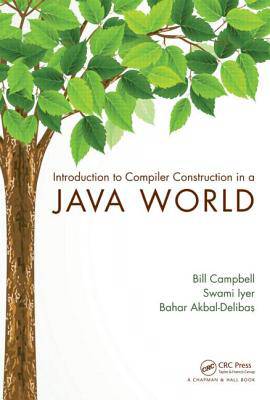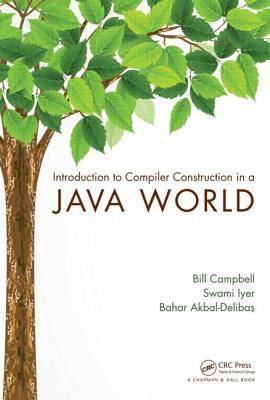
- Retrait gratuit dans votre magasin Club
- 7.000.000 titres dans notre catalogue
- Payer en toute sécurité
- Toujours un magasin près de chez vous
- Retrait gratuit dans votre magasin Club
- 7.000.0000 titres dans notre catalogue
- Payer en toute sécurité
- Toujours un magasin près de chez vous
Introduction to Compiler Construction in a Java World
Bill Campbell, Swami Iyer, Bahar Akbal-DelibasDescription
Immersing students in Java and the Java Virtual Machine (JVM), Introduction to Compiler Construction in a Java World enables a deep understanding of the Java programming language and its implementation. The text focuses on design, organization, and testing, helping students learn good software engineering skills and become better programmers.
The book covers all of the standard compiler topics, including lexical analysis, parsing, abstract syntax trees, semantic analysis, code generation, and register allocation. The authors also demonstrate how JVM code can be translated to a register machine, specifically the MIPS architecture. In addition, they discuss recent strategies, such as just-in-time compiling and hotspot compiling, and present an overview of leading commercial compilers. Each chapter includes a mix of written exercises and programming projects.
By working with and extending a real, functional compiler, students develop a hands-on appreciation of how compilers work, how to write compilers, and how the Java language behaves. They also get invaluable practice working with a non-trivial Java program of more than 30,000 lines of code. Fully documented Java code for the compiler is accessible at http: //www.cs.umb.edu/j--/
Spécifications
Parties prenantes
- Auteur(s) :
- Editeur:
Contenu
- Nombre de pages :
- 382
- Langue:
- Anglais
Caractéristiques
- EAN:
- 9781439860885
- Date de parution :
- 21-11-12
- Format:
- Livre relié
- Format numérique:
- Genaaid
- Dimensions :
- 180 mm x 254 mm
- Poids :
- 884 g

Les avis
Nous publions uniquement les avis qui respectent les conditions requises. Consultez nos conditions pour les avis.






